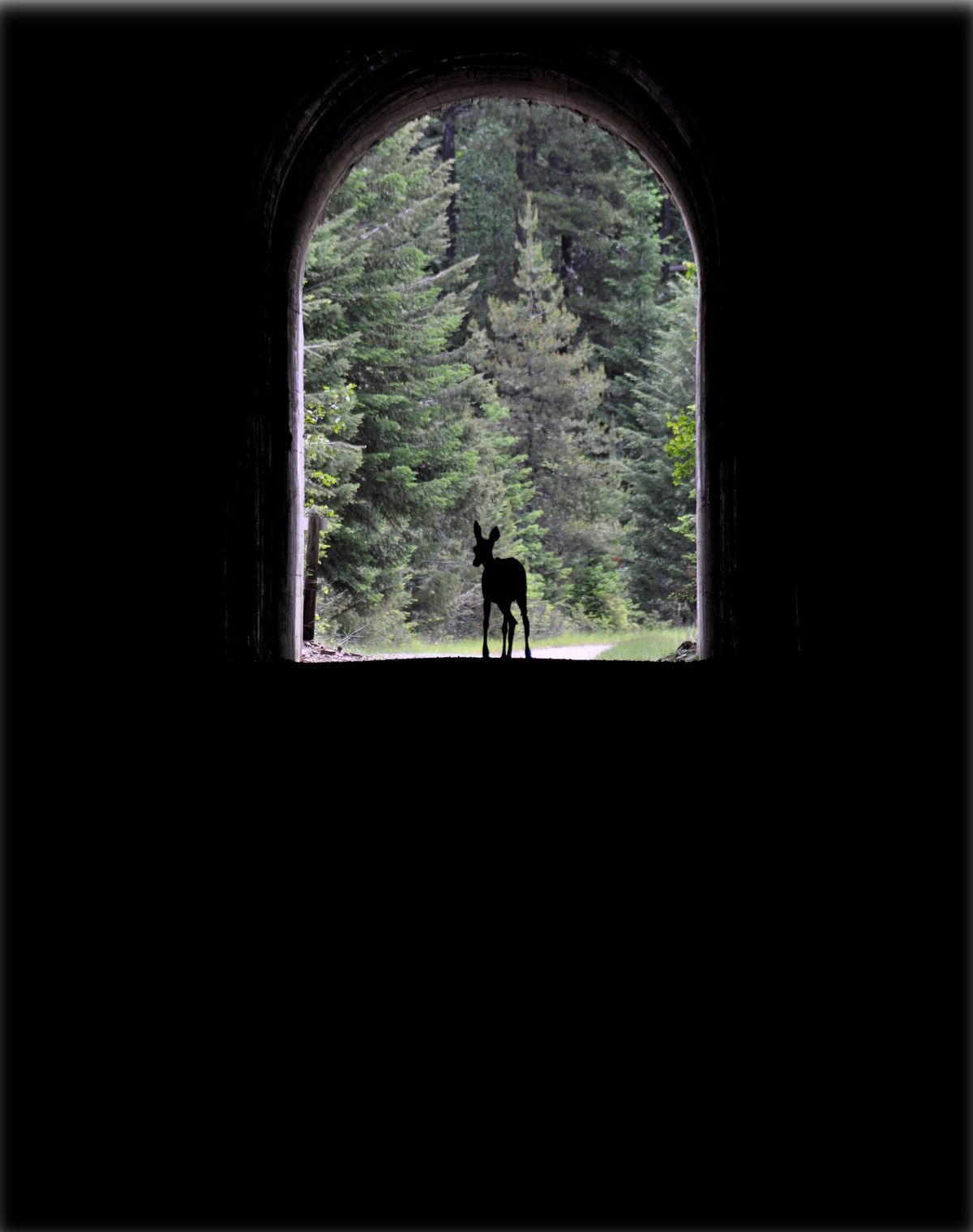Route of the Hiawatha a local treat for visitors
Wild ride on rail trail crossing Montana-Idaho border

When out-of-state friends dropped in for a few days recently – an active couple on their summer vacation – the Route of the Hiawatha immediately came to mind for treating them to a unique local adventure.
It’s a slam dunk for a host: Something for everybody.
The 15-mile rail trail for hiking or mountain biking near Lookout Pass offers a convenient package of exercise, scenery and history that appeals to a wide range of interests, ages and physical abilities.
Want a better workout? Pedal the route both ways for a 30-mile round trip.
Other options include a cool-down hike on the drive back to Spokane on another route into the history of the 1910 fires – the Pulaski Tunnel Trail, 3.5 miles round trip. The trailhead is a mile south of Wallace toward Moon Pass.
Inland Northwest residents have countless active
ways to entertain guests who come into the region for multi-day visits.
Many of them are the places, events and resources that attract us to live here – the mountains, trails, rivers, lakes, wildlife, fishing holes and much more.
But the Hiawatha Trail stands out.
Few world travelers have experienced history rolled into a gentle 1.6 percent downhill grade, crossing seven towering trestles over canyons and mountain streams and plunging through nine tunnels.
Indeed, 3.4 miles of the route is on a trestle or in a tunnel, including the 1.7-mile St. Paul Pass Tunnel, which straddles the Montana-Idaho border.
Signs along the Hiawatha recount the Milwaukee Railroad’s role in tapping the region’s natural resources and how the route was carved.
I’m personally partial to the railroad’s story, having been a brakeman who rode the “Little Joe” electric locomotives as a summer job while I was attending the University of Montana in the 1970s. Little Joes were made by General Electric. They were ordered by the Russians under Joseph Stalin, but the deal got nixed because of Cold War politics and The Milwaukee Road ended up with them at bargain prices and the “Little Joe” nickname.
The history runs deeper as you ride the trail and learn about the railroad supplying the tough mining-logging towns and saving people during the catastrophic forest fires.
It’s an understatement to say the trail is cool.
Even locals who’ve heard about pedaling through the St. Paul Pass Tunnel are surprised by its length – you’ll ride a long time before seeing the light at the end of the tunnel.
And many have been shocked by the absolute darkness and the damp cold that chills unprepared riders even on the hottest summer days.
Tips: Bring light gloves and a sweatshirt to put on for the tunnel ride. A bright light for your bike is essential. Bring a spare.
While the trail falls under the authority of the U.S. Forest Service, Lookout Pass Ski Area, off I-90, is the one-stop concessionaire for trail passes, maps, shuttle services and even lunches if you don’t want to pack your own.
Well-maintained rental bikes are available, complete with helmets and BRIGHT lights.
The bikes have suspensions, which are nice for the rougher portions of the trail.
The trail runs through a wild portion of the Bitterroot Range between the St. Regis and St. Joe rivers. Visitors will see signs of wildlife such as deer, elk, moose and the occasional bear.
Overfed golden-mantled squirrels greet riders at most pit stops.
And don’t be surprised if a critter of some sort shows up in one of the tunnels.
Tip: The importance of a BRIGHT light can’t be overemphasized.
“We frequently see deer in Tunnel 22, especially early in the morning when our trail marshals inspect the trail,” said Christopher Barrett, Lookout Pass spokesman.
“That seems to be a good deer lick spot with minerals on the side walls.”
Moose cows with calves are seen along the trail from time to time, especially around Falcon. “The shuttle bus ride back is famous for moose sightings in what we call the upper and lower moose ponds (beaver ponds),” Barrett said.
A packrat makes a home in Tunnel 21, a curved tunnel on a short stretch of the trail shared with mountain vehicle traffic.
“He collects stuff and stashes it,” Barrett said. “I wouldn’t be surprised to hear him playing an iPod some day.”
Stopping to admire the view from a trestle often affords the chance to look up at ravens or raptors and down on violet green swallows hunting the skies for bugs.
While the trestles tower over Kelly Creek and several other fish-holding streams, few people know that fish reside in the St. Paul Tunnel.
A total of 15,000 gallons of cool water a minute flows out the ends of the tunnel in side gutters that host tiny fish, Barrett said.
“Too small for fishing, but pretty neat,” he added.
The trail is not undiscovered. It’s been featured in travel magazines across the U.S. and in numerous countries. Visitors this year are on track to break the season record of more than 37,000, Barrett said.
Tip: Go early. Consider being at the East portal trailhead when it opens at 8:30 a.m., just after the trail marshals have checked the tunnels for safe passage.
Fewer bikes and more wildlife are on the trail in the early hours.
You could find yourself in one of the absolutely dark tunnels alone, wondering why you didn’t heed my advice to bring a BRIGHT light, and a spare.